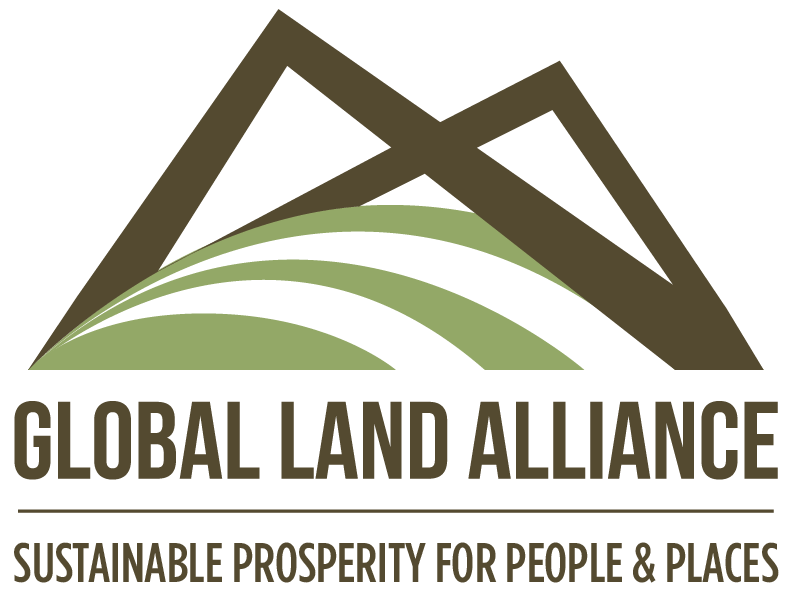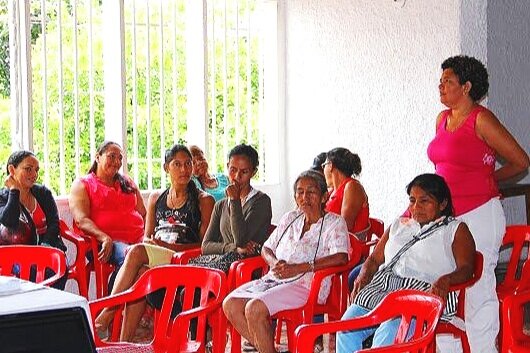Beyond ‘Ticking the Box’: Public Consultation as a Right not a Burden for Land Projects
By Laura Bermudez and Kevin Barthel
One key lesson from international development is the importance of community participation and inclusion throughout the project life cycle. Land and resource management projects have the potential to significantly impact communities, but the efforts to consult with communities and incorporate their participation into the project design are sometimes inadequate. Across sectors, the lesson about the importance of community inclusion has, in some cases, evolved into a misunderstood requirement (and even burden) for project design and implementation. In this context, public consultation has been perceived as a time-consuming and cumbersome endeavor. This is also the case within the land and natural resource management sector. However, public consultation for land and natural resource management projects offers a priceless opportunity to explain, promote and help these projects succeed. We examine why and how public consultation should be viewed as a right and a tool instead of a burden.
What is Public Consultation?
Public consultation as a process with the following attributes: (i) a two-way exchange between project implementers and project stakeholders; (ii) implementers explain the potential risks, benefits and impacts of the project;(iii) stakeholders share their concerns, interests and insights relevant to the project; (iv) it is transparent, inclusive and dialectical; (v) stakeholders’ input is considered carefully and incorporated into the project design to the extent that is possible; and (vi) the resulting changes to the project are shared with the stakeholders. There are benefits and drawbacks to public consultation that should be considered on a case-by-case basis.
Public Consultation as a Right
Exploring public consultation (and participation) from a human rights perspective is important in its own right and it also serves to create an attitude shift on the designers and implementers’ side. The premise is simple: public consultation and active participation should be viewed as a right. Communities and individuals should be afforded the opportunity to understand and influence the projects that seek to impact their livelihoods, their lives. The literature on public consultation has touched upon the idea of participation as a right. However, projects continue to ascribe a very passive “beneficiary” role to the people and communities that projects aspire to “help”, “impact”, or “protect”. Realizing that people have the right to understand and shape initiatives that will impact them is the first step in shifting the attitudes of project designers and implementers. The idea of public consultation as a right is echoed in the right to Free Prior and Informed Consent (FPIC) that is afforded to indigenous communities through the United Nations Declaration of the Rights of Indigenous Peoples (UNDRIP).
It is important to highlight that this right to be informed, to be consulted, to be heard and to shape, exists on a spectrum. The idea of the spectrum of participation goes as far back as the 1960s with Arnstein’s Ladder of Citizen Participation and has evolved into different conceptualizations of local participation. For example, the International Association for Public Participation proposes a spectrum through five words that describe its range: Inform, Consult, Involve, Collaborate, Empower. The underlying idea is that there exist different levels of local involvement and the choice of involvement is dependent on the local context, the type of project and its impacts. These ideas already exist within the practice at many large organizations such as the Interamerican Development Bank , World Bank, the United Nations etc. Yet the disconnect remains – projects continue to struggle to identify practical ways in which projects can incorporate participation that is meaningful to the community and also useful to the project— token consultation and participatory activities to meet institutional requirements are what often occurs instead.
Perceptions of Public Consultation
Public consultation should not be perceived as a ‘box to check’, simply an institutional process pre-requisite; it should be viewed as a tool to adapt, refine and improve project design and should continue throughout project implementation. Today, in many cases public consultations are requirements imposed from the top down – or oftentimes viewed as being imposed by process. They are used as brainstorming forums for risk mitigation. But public consultation in land projects can be much more. Donor agencies, international development companies and project designers could shift their attitudes around public consultation: from a pre-requisite for funding and a risk mitigation brainstorming activity, to a tool to improve and tailor project designs.
Project designers play a critical role in identifying practical ways to incorporate meaningful and useful public participation. They can shape public consultation into a more useful tool by helping local teams identify aspects of the project design that can actually be improved with community input. The project should be viewed as a malleable design, subject to change and tailoring as a result of the consultation and throughout implementation. Designers and implementers should be honest and straightforward about the aspects of the project that the public’s input can and cannot alter.
There are many existing methodologies and basic social science tools that can help project designers and implementers to transform public consultation from a “box-ticking exercise” to a value-adding tool in the arsenal for land projects.
Global Land Alliance is committed to community participation as a core factor of the sustainability of any land project. When public consultation (and inclusion in general) is viewed as a right rather than a burden, we may begin to think about its benefits and drawbacks differently. It may prompt us to truly think about where our project fits within the spectrum of participation. It may prompt project designers and implementers work together to identify where community input and/or participation is viable and valuable. This would benefit the project, the community and their relationship.



